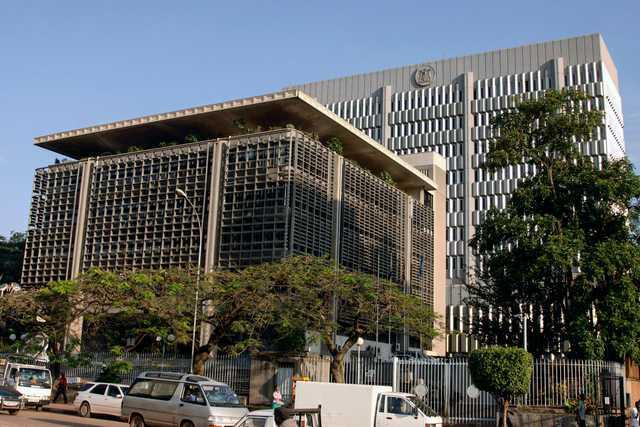By Faridah N Kulumba
Africa-Press – Uganda. The latest research done by the Official Monetary and Financial Institutions Forum (OMFIF) and Absa Bank Africa Financial Markets Index (2022) showed that Uganda runs an economy with the most developed financial sector in the East African region.
What this rank means to Uganda
This achievement depicts a major milestone in the country’s race towards becoming a regional financial hub, with an eye to increased flow of foreign direct investments.
Why Uganda was highlighted
According to the sixth edition of the Absa Africa Financial index, Uganda has made significant improvement in five key areas including access to the foreign exchange market, transparency in taxation and regulatory regime, the capacity of local investors, the state of the macroeconomic environment, and transparency in the enforcement of legal contracts compared to neighboring countries Kenya, Rwanda, Tanzania and Democratic Republic of Congo (DRC).
How East African Countries were ranked
The study showed that Uganda beat its regional peers on market accessibility, openness, and transparency, Kenya is in second position, Tanzania in third position, Rwanda in fourth position, and DR Congo in the fifth position.
How Uganda’s openness in the financial sector improved
The report dubbed Harnessing the Power of African Opportunity shows that Uganda has improved in opening its market to foreign investments. The country has eased the severity of capital controls, bolstered interbank foreign exchange liquidity, and enhanced reporting standards of exchange rate data.
This is an addition to the Bank of Uganda (BoU)’s ability to manage volatility from foreign capital flows by considering the adequacy of forex reserves.
Increase in foreign exchange liquidity
Uganda’s interbank foreign exchange liquidity rose significantly, with annual turnover rising to USD28.4 billion this year from USD21.5 billion in 2021.
In 2015, Uganda’s central bank injected local currency liquidity into the interbank market but the local currency was expected to weaken on emerging dollar demand. The central bank, the Bank of Uganda sold local currency to banks via a seven-day reverse repo to improve liquidity but it was unclear how much shillings it pumped into the market.
Uganda’s progress in other sectors
The Absa study showed that Uganda has also made a strong improvement in the environmental, social, and governance (ESG) indicators. This is after BoU launched a strategic plan for 2022-27 that includes new goals such as the promotion of a sustainable financial system.
How Tanzania improved
Tanzania has also moved to liberalize its capital account through its Foreign Exchange Regulation Act 2022 which opened up access to foreign investors in the domestic debt market. This included allowing investors from Southern African Development Community (SADC) member states to participate in the government bonds market at the primary market level.
The new regulations also give domestic residents easier access to regional financial markets to diversify their investment portfolios.
Kenya’s plan for progressing
The Central Bank of Kenya issued guidance for banks to incorporate climate-related factors into their risk management framework.
In June this year, Kenyan Association of Manufacturers (KAM) chairperson Mucai Kuniha confirmed that there is dollar shortage in the country. The real Kenya shilling exchange rate against the United States dollar rose above sh12o (USD0.99) even though it is formally quoted at around sh116 (USD1.96).
The liquidity was attributed to the ongoing war between Russia and Ukraine which resulted in the straining of the country’s forex chest. Bankers have also attributed the liquidity pain to increased outflows for dividend payments to foreign investors at Kenya’s Securities Exchange (NSE) #ticker: NSE.
About Absa Index
The Absa Africa Financial Markets Index evaluates countries’ financial development based on measures of market accessibility, openness, and transparency. The aim is to show how economies can reduce the barriers to investment which can, in turn, boost sustainable growth.
Scores determination
Scores are determined by the relative, rather than the absolute, performance of each country across six key pillars: market depth, access to foreign exchange, market transparency, tax and regulatory environment, the capacity of local investors, microeconomic environment and transparency, and legal standards and enforceability.
In addition to quantitative data analysis, OMFIF conducted a survey of over 50 organizations actress Africa to produce the index. This includes responses from central banks, securities exchanges, regulators, market participants, accounting firms, and international development organizations.
Foreign exchange weakening
Foreign exchange reserve adequacy has generally weakened relative to the previous year. Ten AFMI countries have received International Monetary Fund financing in 2022, worth a cumulative USD1.6 billion, to cushion the blow from external shocks.
The overall findings showed that Uganda rose two places to fourth, while Namibia and Kenya improved their ranking within the top 10. Scores for these three countries primarily rose due to progress in adopting ESG policies and frameworks.
For More News And Analysis About Uganda Follow Africa-Press






